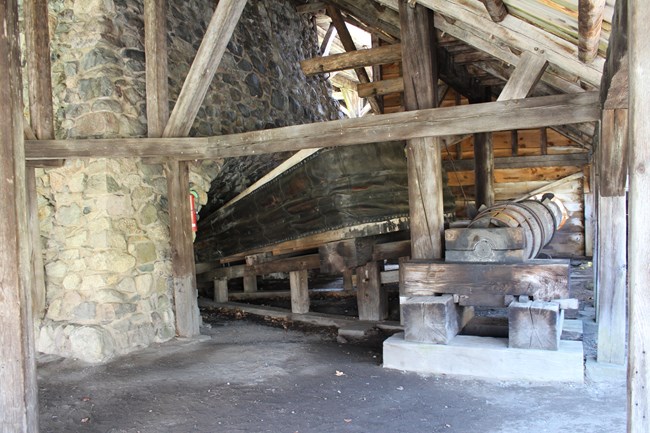Part of a series of articles titled Iron Making.
Previous: Iron Making: Smelting
Article

NPS Photo / Elizabeth Thakkar
The casting shed at the base of the furnace is where the cast iron and slag waste were removed from the furnace. Molds were specially prepared and awaited the molten metal.
Gray iron was poured into molds composed of a clay/sand mix "loam" to make cast iron cookware like pots, kettles, posnets and skillets. Molds had to be carefully dried to reduce the risk of exploding steam pockets when the moist mold came in constant with molten iron. Gray iron was also cast in the sand to make firebacks. When poured into the molds, it was necessary to separate the slag from the iron to keep the slag from being trapped in the iron. Cookware was finished by filing and cleaning before it was brought to the river for shipment.
Mottled iron was also cast into the sand in the shape of long bars. In this case the iron would be cast with slag and all and the slag would float to the top of the bars where it would break off. The iron then froze into heavy ingots or "pigs". Pig iron was an intermediate step in the making of wrought iron. Pig bars were dragged to the forge using oxen.
The slag waste solidified when it cooled and sometimes resembled glass. The slag was disposed of at the waterfront by dumping it over the bulkhead. Over time the slag pile grew. The slag pile remains today and when the archeologist was searching for the furnace, he traced the slag pile back to its origin at the furnace.
Part of a series of articles titled Iron Making.
Previous: Iron Making: Smelting
Last updated: September 9, 2021